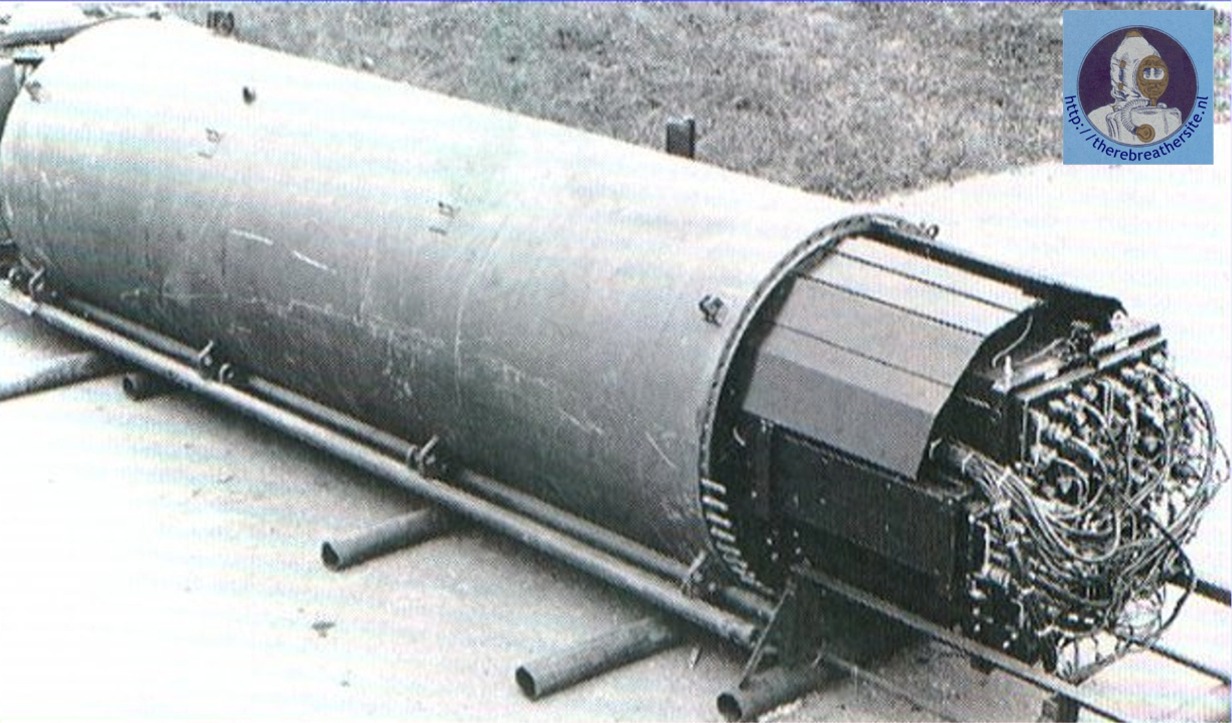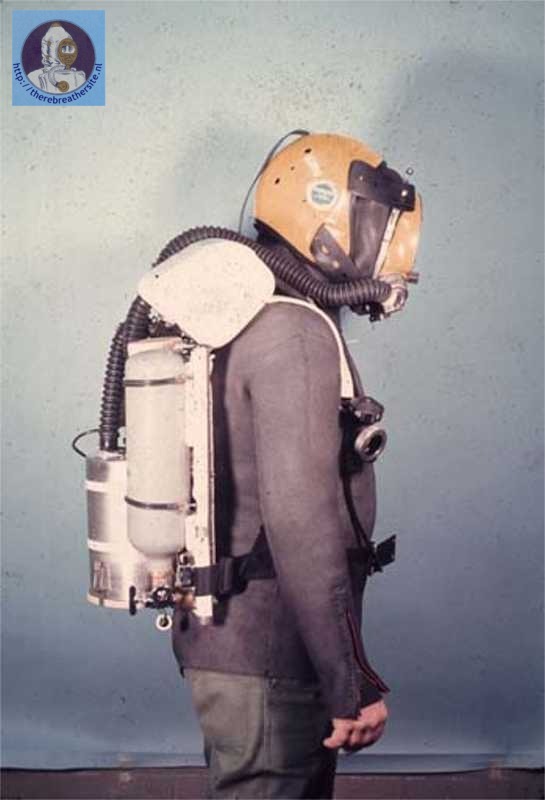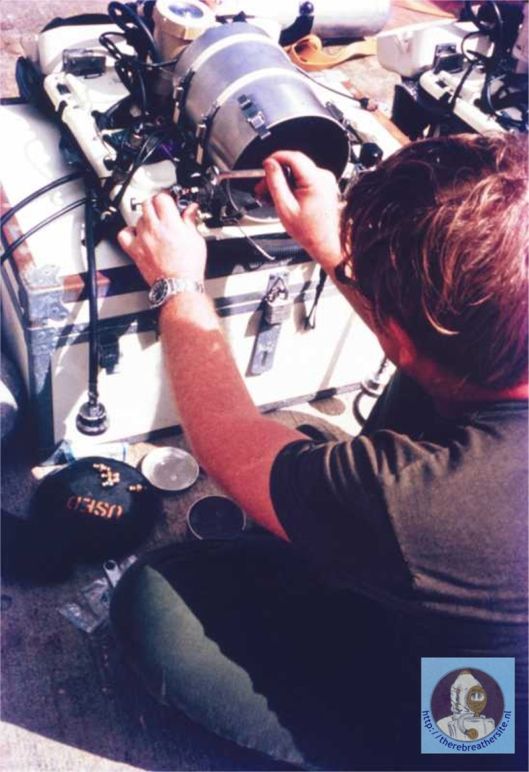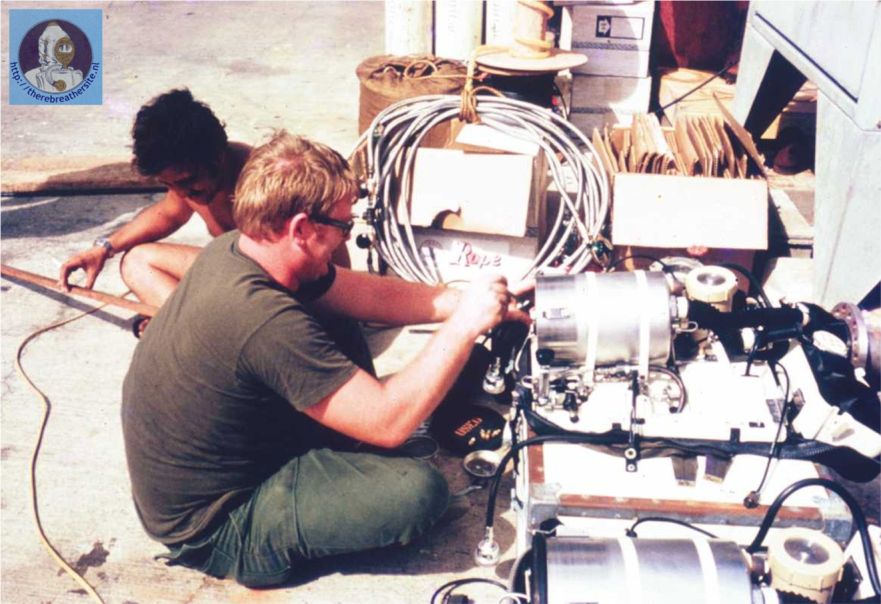 |
 |
| A couple of years ago Scott send me two CD's with photos of a large
US projekt. The photos showed the
Aegir project and also some rare rebreathers. These rebreathers were
GE MK10 rebreathers. These units have been used for the Secret "Ivy Bell"
operations. This operation involved tapping submarine cables and divers
had to change the tapes |
| |
|
Submarine cables now play a dominant role in international
telecommunications, since - in contrast to the limited bandwidth
available for space systems - optical media offer seemingly unlimited
capacity. Save where cables terminate in countries where
telecommunications operators provide Comint access (such as the UK and
the US), submarine cables appear intrinsically secure because of the
nature of the ocean environment.
In October 1971, this security was shown not to exist. A US
submarine, Halibut, visited the Sea of Okhotsk off the eastern USSR and
recorded communications passing on a military cable to the Khamchatka
Peninsula. Halibut was equipped with a deep diving chamber, fully in
view on the submarine's stern. The chamber was described by the US Navy
as a "deep submergence rescue vehicle". The truth was that the "rescue
vehicle" was welded immovably to the submarine. Once submerged, deep-sea
divers exited the submarine and wrapped tapping coils around the cable.
Having proven the principle, USS Halibut returned in 1972 and laid a
high capacity recording pod next to the cable. The technique involved no
physical damage and was unlikely to have been readily detectable.
|
|
 |
|
The
Okhotsk cable tapping operation continued for ten years, involving
routine trips by three different specially equipped submarines to
collect old pods and lay new ones; sometimes, more than one pod at a
time. New targets were added in 1979. That summer, a newly converted
submarine called
USS Parche
travelled from San Francisco under the North Pole to the Barents Sea,
and laid a new cable tap near Murmansk. Its crew received a presidential
citation for their achievement. The
Okhotsk cable tap
ended in 1982, after its location was compromised by a former NSA
employee who sold information about the tap, codenamed IVY BELLS, to the
Soviet Union.
Ronald
Pelton, a national Security Agency employee, told the Russian about
the project in the 1980s. This turncoat received a mere $35,000 for this
information from the Russians. One of the IVY BELLS pods is now on
display in the
Moscow museum of the former KGB. The cable tap in the Barents Sea
continued in operation, undetected, until tapping stopped in 1992. |
|

Submarine-cable tapping device |
|

Learn more in this book |
The pictures of the large, white rebreather are of the GE Mark 10 Unit.These are the only known pictures of the unit,
outside classified circles.
This particular rebreather was used by Ron Ault to make his record-breaking 1972 excursion in the DDS MK-2 MOD 0 to
set the in-water record of 1,010 fsw
For many years these rebreathers were classified, as were the missions they were designed to support.
|
|
|
|
 |
|
|
|
 |
|
|
|
 |
|
|
|
 |
| |
|
 |
| |
|
 |
| |
|
 |
| |
|
 |
| |
|
 |
| |
|
 |
| |
|
 |
| |
|
 |
| |
|

This seem to be another GE rebreather. If you have additional
information please let me know! |
| |
|
 |
| |
|
 |
| |
| |
|
first published 13 may 2007 |
|
|


















